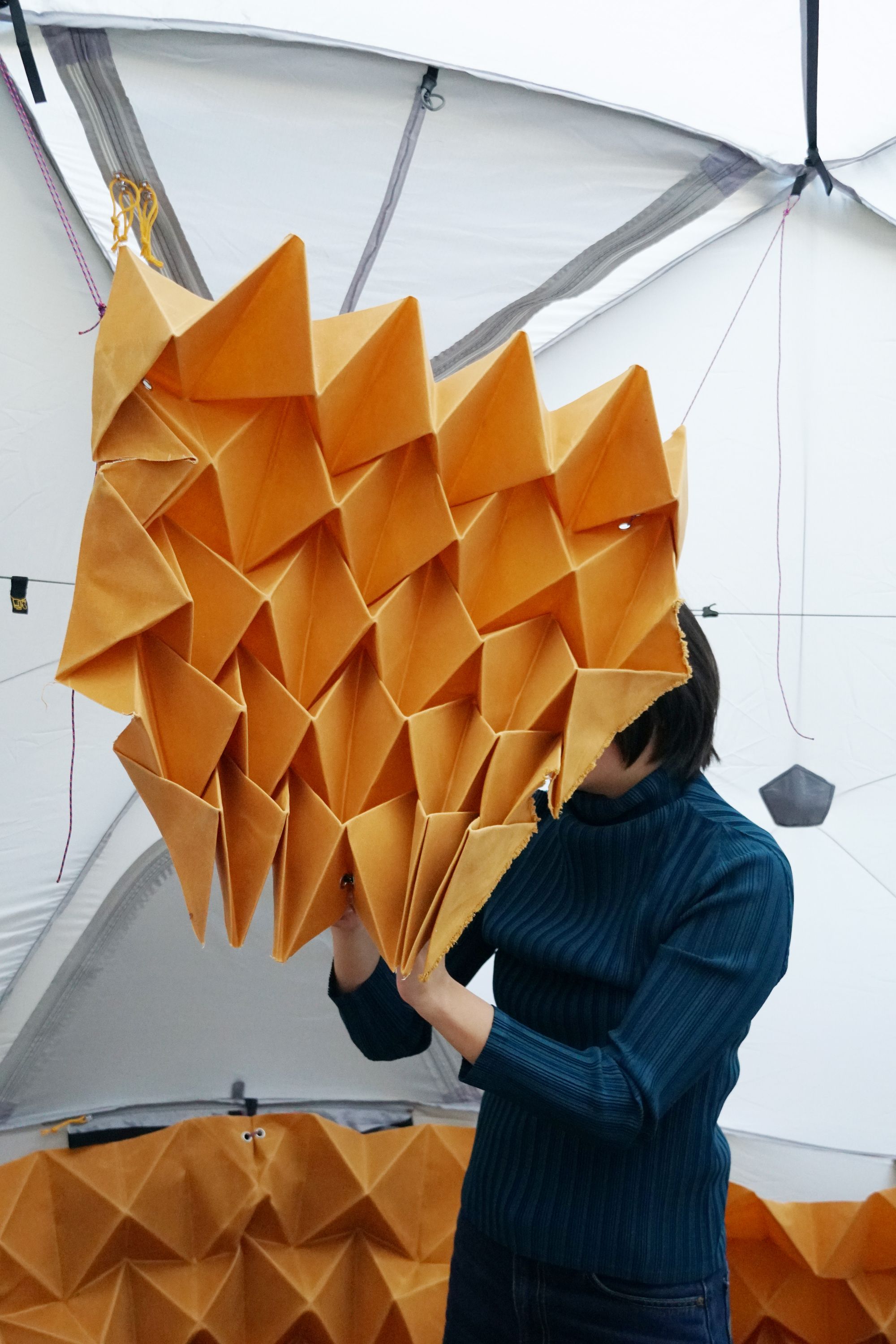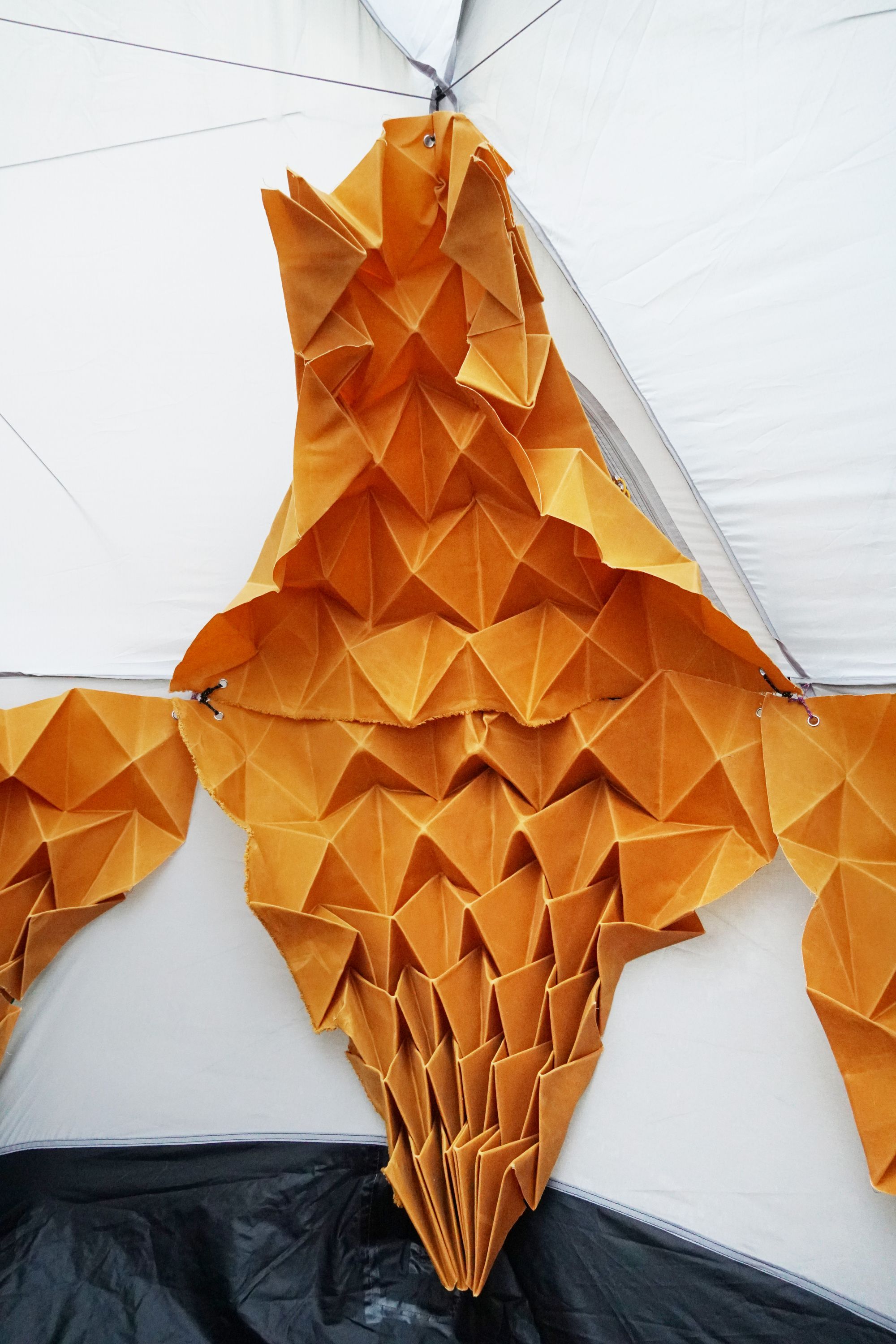

An AeroAstro PhD student at MIT, Mich Lin traveled to the Scottish Highlands to test acoustic interventions in an extreme environment with challenges similar to those of spaceflight. Having used sustainable materials — wool and waxed canvas — and traditional techniques like origami, they learned a design process that not only addresses space-specific issues, but also offers potential solutions for Earth-bound crises.
By Adelaide Zollinger
Feb 3, 2025
Space is usually associated with quiet and stillness, but Mich Lin, a NASA graduate research fellow and PhD candidate housed in MIT’s AeroAstro department, was quick to indicate that on the contrary, the reality of being an astronaut means hearing the constant humming of heavy machinery. “The space station is super noisy. And it's a problem because if you're overwhelmed with noise, or if you're trying to communicate something while there's machinery in the background, everything becomes more challenging,” considers Lin.

An Aero Astro PhD candidate at MIT, Mich Lin traveled to the Scottish Highlands to test acoustic interventions in an extreme environment with challenges similar to those of spaceflight.
Image courtesy of Mich Lin
Their research, which integrates architecture, design, and bioastronautics engineering, focuses on extreme environments with specific applications to space flight — an unusual combination which took them to the Scottish Highlands for a field project. Having spent some time working for an architecture firm in Copenhagen, Denmark, Lin became familiar with a program by the Royal Danish Academy called “Architecture and Extreme Environments.” They explain:
Every year, [the program] picks an extreme site, and [their] idea is that in order for architecture to be meaningful, you have to take a context-specific approach. I was really enamored by that idea of being able to dive into something so precise... and through learning the methodology, to be able to translate that into a spaceflight context.
As part of the program, Lin traveled to the north of Aberdeen and the Isle of Skye in Scotland to test the effects of portable acoustic panels in a small tent pitched on an isolated site with extreme weather conditions. The idea was to find out whether the paneling would improve the physical conditions within the tent — temperature and noise — to enable better sleep, mood, and adaptation to a foreign environment.
In Lin’s account, learning the process of designing something that’s specific to an extreme site starts with identifying constraints — in the case of Scottish winters, these are high winds, intense rain and humidity — and transforming them into design opportunities by mitigating the stressors, preferably in passive ways. Drawing a parallel between astronauts’ acoustic struggles and how to address insulation issues in a similarly volume-constrained environment, Lin explored the use of different materials to create initial prototypes in response to environmental factors.
Waste wool is a huge problem in the sheep industry in Scotland... it actually gets sold at a loss,” Lin reflected while reviewing the materials they had used to create their modular, acoustically insulating panels. “It is antimicrobial, flame retardant, and insulating even when wet. It has great thermal and acoustic insulation properties.
To construct the body of the panels containing the wool, they used waxed canvas — thick cotton infused with beeswax — whose structural properties and portability were convenient to achieve origami folding. In the prototyping phase which took place at MAD’s N52 fabrication space, a lot of hands-on work and craftsmanship were involved, leading to a deeper connection with the raw materials and the people supporting work in the space. “I really leaned on [MAD’s Technical Instructor] Bill McKenna a lot to discuss and have conversations, but also for camaraderie,” shares Lin.
For the one-to-one scaling phase, Lin recounted facing “unexpected problems with scale and materiality. It was very challenging, because precision became really important, and aspects like the floppiness of the material became a big factor.” The process of creating synergy between material, geometry, and form is at the heart of the architectural design process, which Lin found incredibly fulfilling to apply in an extreme context. While not immediately apparent in its proximity to spaceflight, rural mid-winter Scotland approximates many of the same challenges, including isolation, confinement, and operational limitations (difficulty of resupply, evacuation, and mobility). These challenges added up, sometimes in surprising ways such as the tent itself being blown away towards the ocean by 60 mph gusts of wind. “I ended up having to hop barbed wire fences to chase [the tent] down through a cow field. It took me about an hour to get it back towards the car,” remembers Lin.
Lin’s undertaking articulates the importance of process and personal growth in addition to end goals and technical solutions. At its core, the experiment allowed them to reflect on the meaning and practice of design:
I think an absolute challenge in space architecture is understanding the spaces for which you’re supposed to design without having first-hand experience… Design to me is thoughtful consideration, and in that sense it permeates every aspect of our life. [As designers] we naturally want to draw on personal experiences, right? But it's just not possible in this field.
Looking at broader applications, Lin sees an opportunity to apply similar methodologies and materials to overcrowded or stressful settings on Earth, exploring questions of privacy in confined spaces such as temporary shelters or sleeper trains. “The biggest thing I took away from this is the empowerment and confidence that I gained through this project … I’m excited to figure out what’s next,” they conclude.
Lin acknowledges the contributions of Yihong Amy Chen & Crys Tang (UROPs), David A. Garcia (KADK), Aleksander Guldager Kongshaug (GXN), Henry Glogau (GXN), Katya Arquilla (CU Boulder), Mark Rau (MIT), Bill McKenna (MAD).